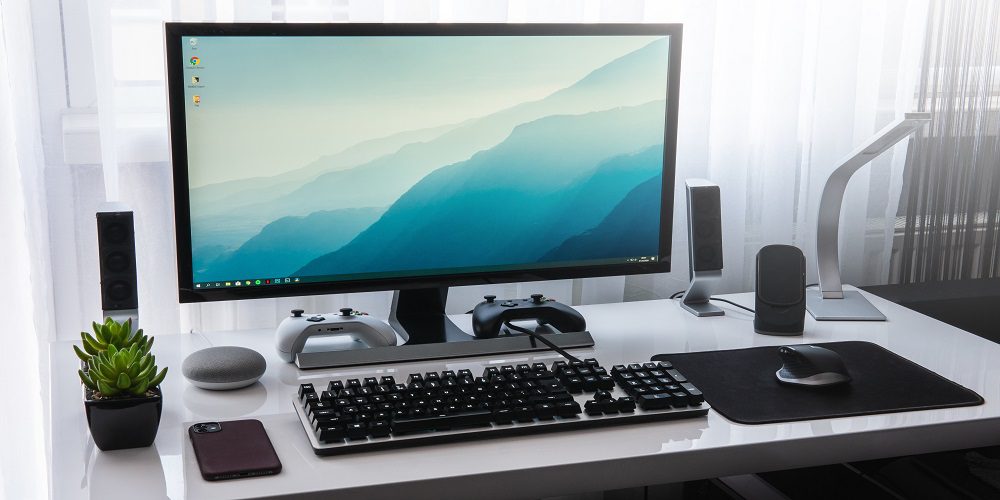Welcome to the digital age, where computers are an integral part of our lives. From mind-boggling technological advancements to everyday tasks, we rely on these marvels of modern innovation more than ever before. But hold on a second! Before you dive headfirst into the world of bytes and gigahertz, it’s time for a reality check. There are some common misconceptions about computers that need debunking. In this blog post, we will unravel the truth behind these myths and separate fact from fiction.
Introduction
Computers have become an integral part of our daily lives. From waking up in the morning to going to bed at night, we are surrounded by technology and rely on it for various tasks. The prevalence of computers has revolutionized the way we communicate, work, and access information. However, with this increased reliance on technology comes a lot of misunderstandings and misconceptions about computers.
Common Misunderstandings About Computers:
There are many misconceptions about computers that have been perpetuated over the years. These misunderstandings often stem from a lack of understanding or outdated information. In this section, we will address some of the most common misunderstandings about computers and provide accurate information to debunk these myths.
1. Myth: Macs are immune to viruses and malware.
One of the most prevalent myths about computers is that Macs are less susceptible to viruses and malware compared to PCs. While it is true that there are fewer reported cases of virus attacks on Macs, that does not mean they are entirely immune. The main reason for this misconception is that PC users make up a larger portion of the market share, making them more attractive targets for cybercriminals. Furthermore, with the increasing popularity and usage of Macs, they have become more vulnerable to cyber threats.
2. Myth: More RAM equals better performance.
Another common misunderstanding about computers is that adding more RAM will automatically improve their performance. While having sufficient RAM is crucial for multitasking and running memory-intensive programs, it does not necessarily translate into better overall performance. Factors such as processor speed, storage type, and graphics card also play significant roles in determining a computer’s speed and efficiency.
3. Myth: Closing unused programs improves computer speed.
Many people believe that closing unused programs can help improve their computer’s speed and performance since there will be fewer processes running in the background. However, modern operating systems such as Windows 10 and macOS manage resources efficiently by prioritizing active programs and using idle resources for background processes. In fact, closing and reopening programs may even slow down your computer, as it requires more resources to launch them again.
4. Myth: Private browsing makes you completely anonymous online.
Private browsing, or incognito mode, is a handy feature that prevents browsing history, cookies, and other data from being stored on your computer. However, it does not make you completely anonymous online. Your internet service provider can still see your browsing activity, and websites can track you through your IP address. Additionally, private browsing does not protect against malware or phishing attacks.
5. Myth: Leaving your laptop plugged in all the time damages the battery.
There is a common belief that leaving your laptop plugged in all the time will damage its battery by overcharging it. However, modern laptops are designed with built-in mechanisms to prevent overcharging. Once the battery reaches full charge, the charging stops automatically and switches to a power-saving mode. It is recommended to occasionally use your laptop on battery power to keep it calibrated.
6. Myth: You should always shut down your computer when not in use.
It is a common misconception that you should shut down your computer completely when not in use to save energy and prolong its lifespan. While shutting down can save energy, it does not necessarily extend the computer’s lifespan. In fact, constantly powering on and off your computer can put additional strain on its components. It is generally recommended to shut down your computer only when necessary and to use sleep or hibernate mode for short periods of inactivity.
7. Myth: The more megapixels, the better the camera.
When it comes to digital cameras, many people believe that higher megapixels equal better image quality. While megapixels do play a role in determining image resolution, they are not the only factor. Other factors, such as sensor size, lens quality, and image processing, also contribute to overall image quality. A camera with fewer megapixels but better hardware and software may produce better images than one with a high megapixel count but inferior components.
Why These Myths
The world of computers and technology is constantly evolving, but unfortunately, there are many common myths and misconceptions that continue to persist. These misunderstandings can lead to confusion and even prevent individuals from fully utilizing the potential of their devices. In this section, we will explore the reasons why these myths exist.
1. Lack of Education:
One of the main reasons for the existence of computer myths is a lack of education about technology. Many people have limited knowledge when it comes to computers and are not aware of how they work or what their capabilities are. This knowledge gap can create room for false information to circulate and be accepted as fact.
2. Fear-Mongering:
In today’s society, there is a constant fear surrounding technology, especially when it comes to data privacy and security breaches. This fear-mongering often leads to sensationalized news articles or rumors about computers being dangerous or harmful. While it is essential to take precautions with our personal information online, these exaggerated claims can perpetuate myths and misconceptions about computers.
3. Misinterpretation:
Another reason behind computer myths is the misinterpretation or misrepresentation of technical jargon by non-experts. Technology can be complex, and terms used in the industry may be misunderstood by those without a technical background. This misunderstanding can result in the oversimplification or exaggeration of information, leading to false beliefs.
4. Outdated Information:
As mentioned earlier, technology is constantly evolving at a rapid pace, which means that what may have been true in the past may not be relevant or accurate today. Outdated information can lead to misconceptions and myths about technology, especially when it comes to devices or software that have been updated with new features and capabilities.
5. Marketing Strategies:
Sometimes, computer myths are deliberately created as a marketing strategy by companies to promote their products or services. They may exaggerate the benefits of their product or spread false information about their competitors to gain a competitive edge in the market.
6. Human Nature:
Lastly, humans tend to believe what they want to believe, even if it goes against proven facts. We often cling to familiar beliefs and resist change, leading us to reject new information that contradicts our existing beliefs. This is known as confirmation bias and can contribute to the perpetuation of computer myths.
Conclusion
It is important to question and verify information about computers that we hear or read about. By understanding and debunking these common misunderstandings, we can use technology more effectively and make informed decisions about our devices. Remember to always stay curious and keep learning about computers to fully utilize their capabilities.



































